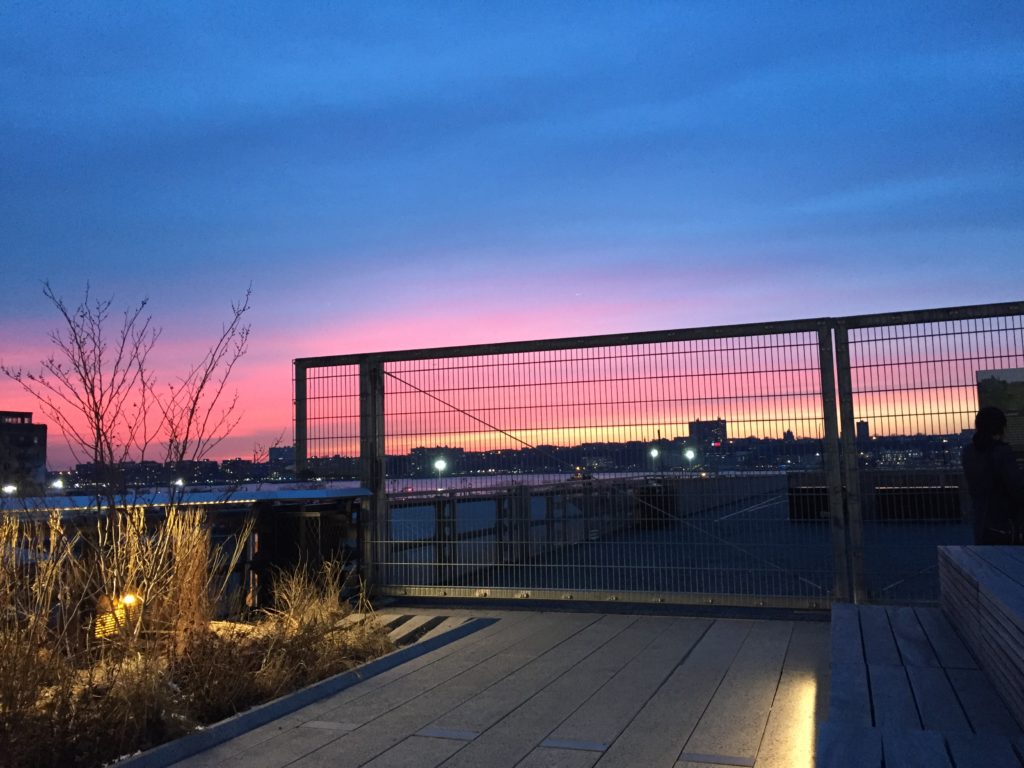 [NOTE: 14 days after this post appeared, Mayor DeBlasio did indeed visit the High Line. Just sayin’.]
[NOTE: 14 days after this post appeared, Mayor DeBlasio did indeed visit the High Line. Just sayin’.]
Since becoming Mayor of New York Bill DeBlasio has avoided the High Line, and perhaps with good reason. Almost from the moment it opened, the runaway success of Manhattan’s “park in the sky” vaulted it from an innovative, drop-dead gorgeous park into a platform for development by billionaires and “starchitects.” It never fit with DeBlasio’s message about the Other America, so he just stayed away, always promising to visit some day in the future.
The other day I was walking north through the Chelsea Grasslands and a Monarch butterfly flew across my path. It arced east for a moment toward 20th Street, then circled back and disappeared into a cluster of Rudbeckia: orange wings merging with yellow and black flowers, a colorful late morning pollination. It made me think of Mayor DeBlasio, and all that he’s missing out on. The butterfly made me wonder what sort of tour would I take the Mayor on, if and when he decides to pay a visit to the High Line.
Over the past few decades the Monarch has been under tremendous pressure from loss of habitat, climate change, chemicals and pesticides that are sprayed on fields and lawns all over the country, destroying its natural food source. This gorgeous species almost disappeared entirely, and the fact that today you can spot a Monarch on any random walk along the High Line is more than good news: it’s a metaphor for the sanctuary city. This place, basically one long, gigantic green roof filled with a mix of native and exotic plant species, created a safe landing spot for the Monarch and many other creatures: birds, insects, small mammals and the odd human. The butterfly I saw was a tri-color reminder of the values that inform every aspect of the High Line and have done, from the very moment of its conception. Nowadays, more than ever since the park opened in 2009, we need to remember those values. Actually, we need to trumpet them from the rooftops.
I won’t sugar coat it: the High Line is too crowded, development is overwhelming the neighborhood, there are too many super-rich families, locals yield to hoards of tourists, the air is filled with fumes from idling construction vehicles, it’s sometimes noisy and claustrophobic. But the founding dream of the High Line lives on, accessible to anyone taking a stroll through the park.
If I were walking along the High Line with Mr. DeBlasio I’d focus on the values and ideas of this place, rather than its celebrity and iconic status. As we as we huffed up the stairs to the park I’d tell him about that Monarch butterfly, and when we got to the top, I’d direct his attention to the east.
We’re not going to begin at the beginning, Mr. Mayor; we’re going to start in the middle, at 26th Street.
Let’s not gaze north at the elegant spires of the Empire State Building, New York Times headquarters, Condé Nast or Bank of America towers – they are beautiful, sure, but also familiar. We know what they stand for. Let’s look instead straight ahead, at the Elliott-Chelsea Houses. This complex is one of two large public housing projects in the High Line’s ‘hood and, along with the Fulton Houses a few blocks to the south, it plays a vital role in the park. That’s because this place was created for the local community, and Friends of the High Line (FHL), the founding organization that still runs the park, continues to devote a huge amount of energy and resources into developing programs for our neighbors in these apartments. They even invited kids from the projects to create their own social programs, and have developed employment and training opportunities as well.
Behind Chelsea Elliott, closer to 8th Avenue, is the expansive Penn South, a complex built in the 1950s as part of a national effort by the United Housing Foundation to create good, affordable housing at a moderate cost. It was here, one very hot August day in 1999, that Robert Hammond and Joshua David sat next to each other at a community board meeting. On the agenda: tearing down the High Line.
Let’s remember something about New York that we can all be proud of: it is one of the only states in the country with a constitutional mandate to provide for “the aid, care and support of the needy” through public housing. Another neighbor along the High Line is Flemister House on West 22nd Street, a 50-unit affordable housing community dedicated to providing safe housing for low-income, homeless New Yorkers with H.I.V. and AIDS. Look at these places, not at the shiny new buildings that are popping up all around them. This is the community that matters to me; this is its beating heart.
As we stroll south, I will tell the Mayor that for me the High Line is, above all, a place that stands for community. It’s harder than ever to see it through the crowds and the glassy, sinuous facades of our fancy new buildings, but it’s in the DNA of this place. In the long, three-part process of creating the High Line, FHL held dozens and dozens – literally countless – meetings with residents of West
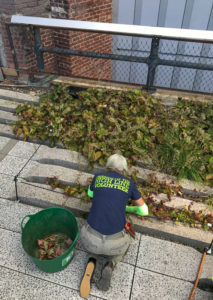 Chelsea, Hell’s Kitchen and the Village, many of which took place in the community rooms of the public housing projects. This is because the founders’ original vision was that the High Line would be built for the community – for the people who live around and on both sides of the viaduct. Originally FHL assumed 300,000 people would visit each a year, and they designed programming that would suit people of all ages: film, dance, art, science and horticultural events; Tai Chi, stargazing, lectures, walking tours, storytelling, and more. All these events take place throughout the year; they attract people from around the neighborhood and the other boroughs who still, despite the throngs of tourists, consider this “the people’s park.”
Chelsea, Hell’s Kitchen and the Village, many of which took place in the community rooms of the public housing projects. This is because the founders’ original vision was that the High Line would be built for the community – for the people who live around and on both sides of the viaduct. Originally FHL assumed 300,000 people would visit each a year, and they designed programming that would suit people of all ages: film, dance, art, science and horticultural events; Tai Chi, stargazing, lectures, walking tours, storytelling, and more. All these events take place throughout the year; they attract people from around the neighborhood and the other boroughs who still, despite the throngs of tourists, consider this “the people’s park.”
The point, Mr. DeBlasio, is that this place started with the community, and while the park is still young, it already has a legacy that’s rooted in that idea. The High Line has become a beacon to other adaptive reuse projects around the country (and the globe) and Friends of the High Line not only wrote the playbook for how to create projects like this — how to navigate and work with the many stakeholders and interest groups involved — but they recently launched a network that meets throughout the year and has become a kind of global think tank for creative, community-based urbanism. The values that informed the building of this park continue to animate the people who run it, and they are sharing their wisdom, time and resources with the world. When I stroll through the madding crowds of the High Line, this is what I always try to remember.
We have walked south towards 16th Street, and are now standing in the covered area between Chelsea Market and the old Nabisco factory. Ignore those ladies with fancy purses eating Italian ice cream and face west toward a workman-like gate that leads onto a spur once used to transport milk, eggs and butter from the American heartland into the giant maw of Nabisco’s ovens, later to emerge transmogrified into Mallomars, Fig Newtons and Animal crackers: the miracle of the High Line’s Industrial Age.
Today this spur is home to a fully sustainable composting operation that turns millions of cubic yards of plant material into compost for the gardens. It relies on coffee grounds recycled from a café across the street and rainwater captured in giant tanks. Here, at 30’ above street level, you can see the circle of life in action, and the entire process – which I wrote about in detail last spring – was designed by the gardening staff at Friends of the High Line. It’s the latest example of the park’s founding commitment to running a sustainable, green operation, which includes a requirement that vendors provide compostable utensils and packaging for all that food you are see around you.
The idea of sustainability informed every aspect of the High Line’s design, from its horticulture — plants are selected for their ability to adapt to the various microclimates found on the viaduct; they are sourced locally, from growers within a 100-mile radius of lower Manhattan; and they’re irrigated with a specially designed, water-saving drip system — to its architecture, snow removal practices, pest management and the cleaning solutions used in restrooms and other parts of the park.
You can come here for many reasons, including (if you arrive very early in the morning or late in the evening) a moment of solitude in the big city. My first photograph in this post captured such a moment on a bitter cold, winter evening in 2016. It’s not a perfect place, but for those of us who care passionately about diversity in New York, environmental stewardship and respect for community, there is no other place in the city that feels so much like home.
Some day, Mr. deBlasio, you must come and see it.

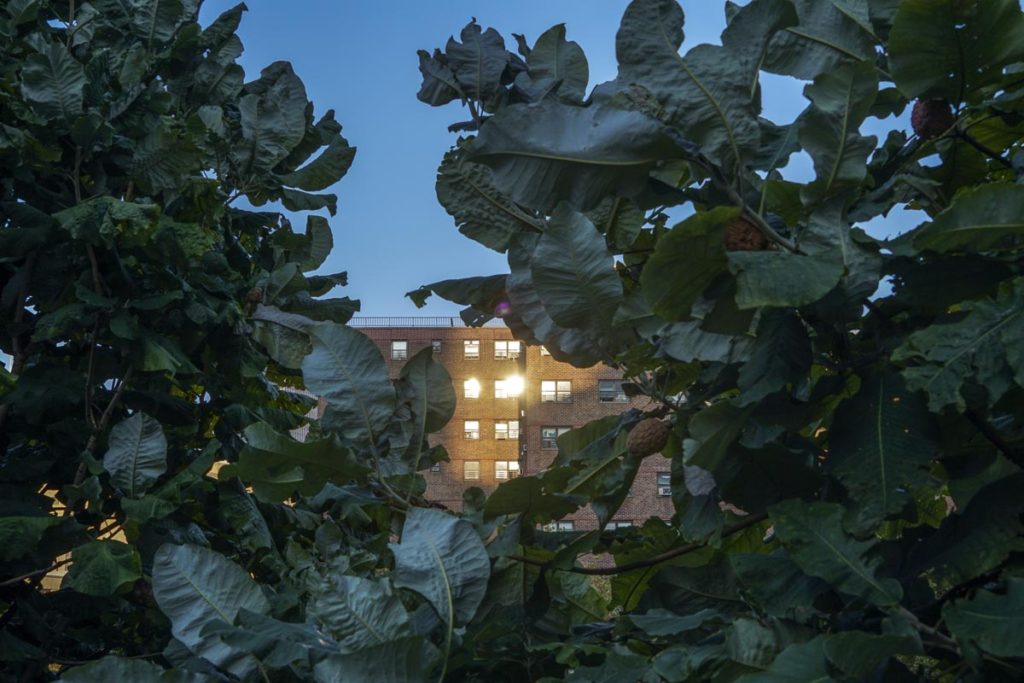
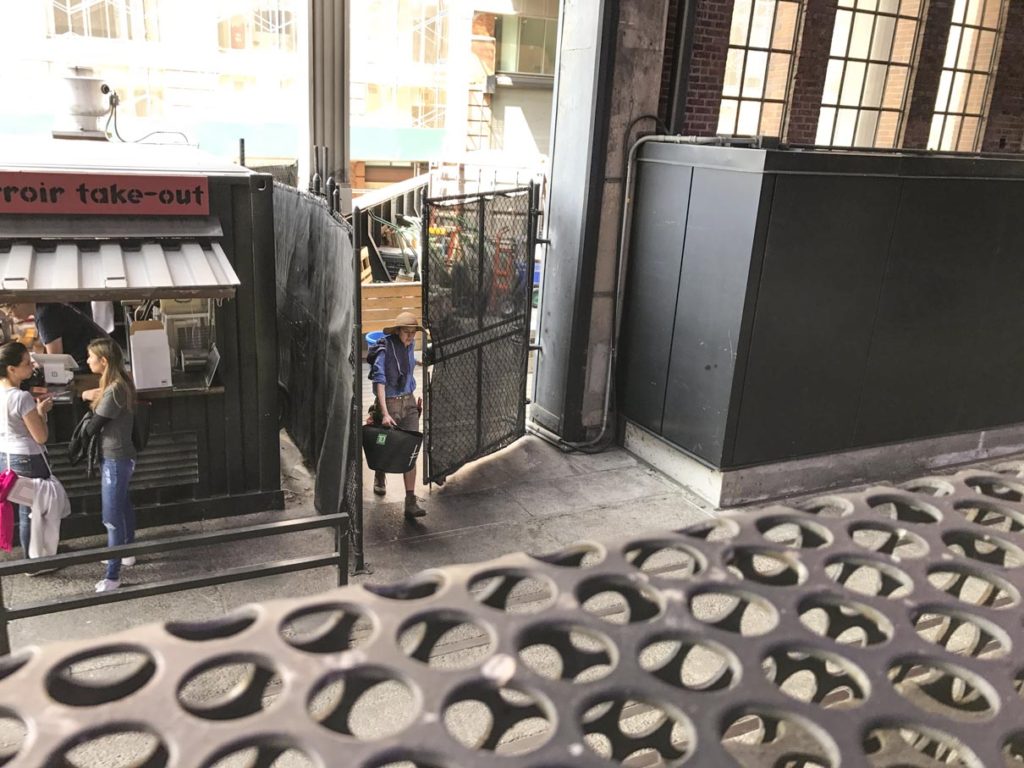
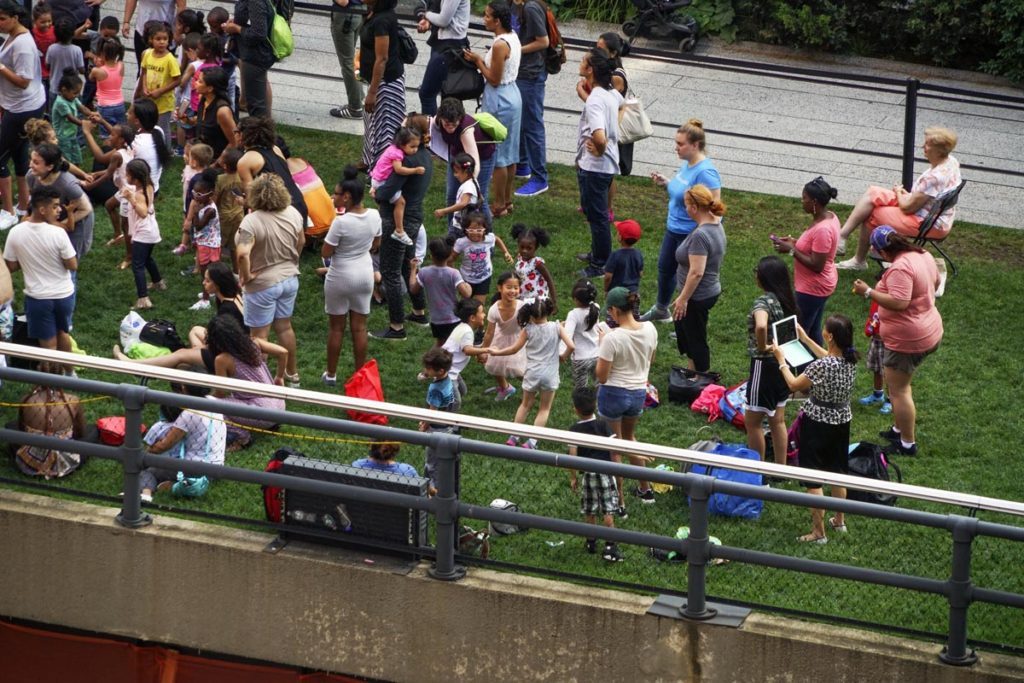








I love this, and thank you!
I hope the mayor reads it and he would be lucky to walk the high line with you!